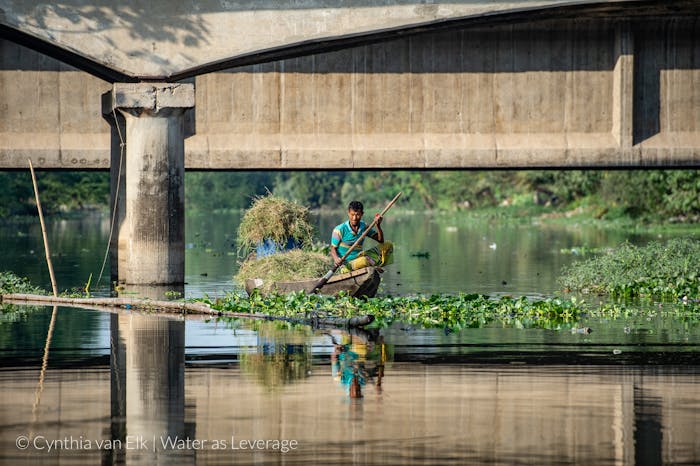Khulna: From Sponge to Brick
Khulna is located in coastal Bangladesh, at the intersection of the Rupsha and Bhairab Rivers on the alluvial soils of the Ganges Brahmaputra delta.
The landscape is crossed by dozens of tidally-influenced rivers, canals, and creeks. The main source of fresh water is the Gorai River, a branch of the mighty Ganges. Khulna City is located approximately 40km from the largest mangrove forest in the world: Sundarbans. The mangrove forest, together with the Mosque City Bagherat, are listed as UNESCO heritage sites and are mainly accessible by boat from the Mongla port. Early settlements in Khulna often excavated the extremely permeable ground to reach superficial aquifers and provide direct sources of freshwater. This common practice combined with heavy seasonal rains generated a series of water ponds that are now a unique part of Khulna’s urban fabric.
Today, Khulna is the third-largest city in Bangladesh and the third-largest economic center in the country. Beginning in the 1960's, large-scale industrialization spurred population growth and urbanization along the river's north-south axis, by which contact with the water was maximized to empower new economic activities. Today, the city is facing serious water resilience issues including saltwater intrusion, "dying" rivers, and coastal flooding from lack of adequate drainage and sea level rise. Interventions at multiple scales are needed to bring improve water resilience in Khulna.

 06 Clean Water and Sanitation
06 Clean Water and Sanitation
 13 Climate Action
13 Climate Action
 14 Life Below Water
14 Life Below Water
 15 Life On Land
15 Life On Land
 11 Sustainable Cities and Communities
11 Sustainable Cities and Communities
 03 Good Health and Well-being
03 Good Health and Well-being